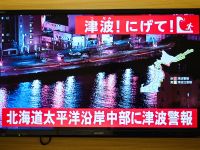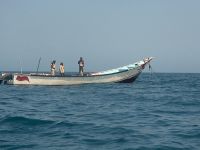Exploration and Development:
Oil exploration in Libya began in 1955, and the first oil fields were discovered in 1959 (at Amal and Zelten -- now known as Nasser). Oil exports began in 1961, and the key national Petroleum Law No. 25 was enacted in April 1965.
After years of little activity due in part to sanctions, Libya now is attempting to attract foreign companies with improved incentives and production terms. Libya has legislation pending which would grant foreign firms better terms, including access to exploration acreage, small field developments, large field incremental production opportunities, and adoption of international competitive bidding practices.
Currently, only around 25 percent of the country's oil fields have been granted to foreign operators (although Libya does plan to open up some 40 blocks in the Sirte basin and other areas to foreign investment). In July 2000, NOC said that it would open up around 70 percent of its land to exploration, and that it would bundle exploration blocks into three packages, with the first package to include blocks in the oil-rich Murzuk basin.
The major component of Libya's expansion plans is development of the el-Bouri offshore oilfield off Libya's western coast, the largest producing oilfield in the Mediterranean Sea (at around 60,000 bbl/d).
Italy's Agip-ENI is the developer of the field, discovered in 1976 at a depth of 8,700 feet and estimated to contain 2 billion barrels in proven recoverable crude oil reserves. The first phase of field development, costing $2 billion, was completed in 1990, with el-Bouri producing about 150,000 bbl/d in 1995, with a sharp decline thereafter. This decline was due largely to an inability to import EOR equipment under UN sanctions, and possibly could be reversed with an infusion of investment. Besides oil, el-Bouri also contains large amounts (2.5 Tcf) of associated gas.
Since the discovery of the giant, 2-billion barrel el-Bouri field, Agip-ENI has reported a series of oil finds in its various blocks, as have other oil companies in the country. The most significant of these is in the Murzuk basin, in the Sahara south of Tripoli. El Bouri was purchased by Repsol in 1993 for $65 million.
Repsol-YPF currently is leading a European consortium, which also consists of OMV and Total. As of early June 1999, Murzuk/El Sharara's output of light (44o API), sweet (less than 0.6 percent sulphur content) oil had reached 140,000 bbl/d and was increasing (to a likely 200,000 bbl/d). Original expectations were that Murzuk production would reach 200,000 bbl/d by the end of 1998, but various problems, including difficulties with the pipeline to the port of Zawiya, delayed achievement of this target. Currently, oil from Murzuk/El Sharara is being processed by the Zawiya refinery.
In October 1997, an international consortium led by British company Lasmo (with a 33.3% stake), along with Agip-ENI (33.3%) and a group of five South Korean companies (led by Korea National Oil Corp., replacing Pedco, and including Hyundai), announced that it had discovered large recoverable crude reserves at the NC-174 Block, 465 miles south of Tripoli, in the Murzuk basin. Lasmo has estimated that production from the field, which it has named Elephant, will cost around $1 per barrel (Repsol-YPF's Murzuk/El Sharara field, with its 30-inch pipeline to the coast, is located only 40 miles to the north). According to Lasmo, appraisal drilling in 1998 has confirmed recoverable reserves of more than 500 million barrels.
Elephant originally was due to begin production later in 2000 at around 50,000 bbl/d, and to utilize an existing 30-inch pipeline located 42 miles to the north. Production start-up now has been delayed, reportedly due to bureaucratic obstacles, for a year or so. Production at the Elephant field is expected to reach 150,000 bbl/d with a year or two of startup.
Other foreign companies active in Libya include: Lundin Oil, a Swedish independent, along with its affiliate Red Sea Oil of Canada, has discovered an estimated 84 million barrels of oil at the En Naga North and West fields on block NC-177 in the Sirte basin (in December 1999, Red Sea announced that testing on the block had been suspended); Total, whose Mabruk field is producing around 18,000 bbl/d; and Canadian Occidental, which controls but has not yet developed a potential 200-million-barrel field in Block NC-101 in the Murzuk basin.
Refining:
Libya has three domestic refineries, with a combined nameplate capacity of approximately 348,000 bbl/d, nearly twice the volume of domestic oil consumption (the rest is exported). These refineries include: 1) the Ras Lanuf export refinery, completed in 1984 and located on the Gulf of Sirte, with a crude oil refining capacity of 220,000 bbl/d; 2) the Az Zawiya refinery, completed in 1974 and located in northwestern Libya, with crude processing capacity of 120,000 bbl/d; and 3) Brega, the oldest refinery in Libya, located near Tobruk with crude capacity of 8,400 bbl/d.
In addition to its domestic refineries, Libya also has operations in Europe. Libya is a direct producer and distributor of refined products in Italy, Germany, Switzerland, and (since early 1998) Egypt. In Italy, Tamoil Italia, based in Milan, controls about 5 percent of the country's retail market for oil products and lubricants, which are distributed through nearly 2,100 Tamoil service stations. Sanctions have constrained Libya's ability to increase the supply of oil products to European markets, however, as Libya's refineries are badly in need of upgrading, especially in order to meet stricter EU environmental standards in place since 1996.
In Egypt, Libya is planning to build gasoline stations on the coastal road linking the two countries as well as in other areas of Egypt. The stations are to be run by Libya's foreign oil investment arm Oilinvest.
Libya's refining sector reportedly was hard hit by U.N. sanctions, specifically U.N. Resolution 883 of November 11, 1993, which banned Libya from importing refinery equipment. Libya is seeking a comprehensive upgrade to its entire refining system, with a particular aim of increasing output of gasoline and other light products (i.e. jet fuel, fuel oil). Possible projects include a new 20,000-bbl/d refinery in Sebha (for which Libya is seeking foreign investment), which would process crude from the nearby Murzuk field, and a 200,000-bbl/d export refinery in Misurata.
NATURAL GAS:
Continued expansion of gas production remains a high priority for Libya for two main reasons. First, Libya has aimed (with limited success) to use gas instead of oil domestically, freeing up more oil for export. Second, Libya has vast gas reserves and is looking to increase its gas exports, particularly to Europe. Libya's proven natural gas reserves in 1999 are estimated at 46.4 Tcf, but the country's actual gas reserves are largely unexploited (and unexplored), and thought by Libyan experts to be considerably larger, possibly 50-70 Tcf.
To expand its gas production, marketing, and distribution, Libya is looking to foreign participation and investment. In recent years large new discoveries have been made in the Ghadames and el-Bouri fields, as well as in the Sirte basin. Libya also produces a small amount of liquefied petroleum gas (LPG), most of which is consumed by domestic refineries.
Libyan natural gas development projects currently underway include as-Sarah and Nahoora, Faregh, Wafa, offshore block NC-41, abu-Attifel, Intisar, and block NC-98. In May 2000, NOC reportedly came out with a framework for gas exploration in the country, under which NOC would have first priority to the foreign company's gas share at an agreed discount.
Potential exists for a large increase in Libyan gas exports to Europe, although at present the only customer for Libyan gas is Spain's Enagas. A joint venture agreement between Agip-ENI and NOC on the Western Libyan Gas Project (WLGP), a $5.5-billion plan aimed at developing and exporting large volumes of natural gas to Italy. The project calls for Italy's Edison Gas to import around 140 Bcf (by 2006) of Libyan gas per year (for 24 years) via a 370-mile underwater pipeline under the Mediterranean, to southeastern Sicily, and then on to the Italian mainland via a connection with the TransMediterranean system carrying Algerian gas to Italy.
Edison plans to use the gas mainly to generate electricity in Italy, with the rest being sold to private customers. As part of the overall WLGP, Agip-ENI is set to develop huge Libyan gas reserves in offshore Block NC-41 in the Gulf of Gabes, as well as in the Wafa onshore gas (and oil) field on the Algerian border. Feasibility studies have been completed on Wafa and NC-41, and gas is expected to begin flowing in late 2003. The project also is expected to produce condensates estimated at around 70,000 bbl/d oil equivalent.
Agip-ENI also has promoted linking the reserves of both Egypt and Libya to Italy by pipeline. An agreement in principle to link Egypt and Libya's gas grids was reached in June 1997, following a visit to Libya by Egyptian President Hosni Mubarak.
The plan is currently under study. Yet another proposal is to build a nearly 900-mile pipeline from North Africa to southern Europe. Such a pipeline could transport natural gas from Egypt, Libya, Tunisia and Algeria, via Morocco and into Spain (a pipeline between Morocco and Spain already exists). Also, Tunisia and Libya agreed in May 1997 to set up a joint venture which will build a natural gas pipeline from the Mellita area in Libya to the southern Tunisian city and industrial zone of Gabes.
In late 1998, Tunisia and Libya signed an agreement for around 70 Bcf of gas per year to be delivered from Libyan gas fields to Cap Bon, Tunisia beginning in 2003. In 1971, Libya became the second country in the world (after Algeria in 1964) to export liquefied natural gas (LNG). Since then, Libya's LNG exports have generally languished, largely due to technical limitations which do not allow Libya to extract LPG from the LNG, thereby forcing the buyer to do so.
Libya's LNG plant, at Marsa El Brega, was built in the late 1960s by Esso and has a capacity of 124 billion cubic feet per year, but due to technical limitations only about one-third of this is available for export, mainly to Enagas of Spain. Work to refurbish and upgrade the El Brega LNG plant in order to deal with the LPG separation problem has been delayed since 1992. If completed, Libyan LNG exports could triple, with likely customers including Spain, Turkey and Italy.
OIL AND GAS INDUSTRIES
State Oil Companies: Libyan National Oil Company (NOC) - Manages the state-owned oil industry and controls over 70 percent of Libya's oil production, Oilinvest - Manages all international investments
Foreign Energy Company Involvement: Agip-ENI (Italy), Canadian Occidental, Husky Oil (Canada), Lasmo (UK), Lundin Oil (Sweden), Nimr Petroleum (Saudi Arabia), OMV (Austria), PanCanadian; Pedco (South Korea), Petrobras (Brazil), Petronas (Malaysia), Red Sea Oil Corp. (Canada), Repsol-YPF (Spain), Saga (Norway), TotalFinaElf (France), Veba (Germany), Wintershall (Germany)
Major Oil Ports: Es Sider, Zuetina, Tripoli
Major Oil and Gas Fields: Amal, Bouri, Bu Attifel, Defa-Waha, Elephant, Kabir, Mabruk, Murzuk, Nasser, Omar, Sarah, Zueitina
Major Pipelines: Amal-Ras Lanuf; Defa-Nasser; Hammada el Hamra-Az Zawiya; Intisar-Zueitina; Intisar -Hatiba; Messla-Ras Lanuf; Nasser-Hatiba; Nasser (Zelten)-Marsa el Brega; Sarir-Marsa el Hariga; Waha-Es Sider
Major Refineries (crude oil capacity): Ras Lanuf (220,000 bbl/d), Az-Zawiya (120,000 bbl/d), Brega (8,400 bbl/d)
Source : United States Energy Information Administration.
Note: Information contained in this report is the best available as of July 2000 and can change.
See also Albawaba ENI upcomming feature about ENI in Lybia.
© 2000 Mena Report (www.menareport.com)







